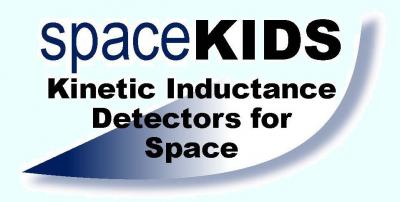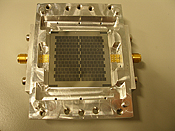Kinetic Inductance Detectors: a new imaging technology for observations in and from space (SPACEKIDS)
A NEW DETECTOR TECHNOLOGY FOR SPACE
Space satellites for astronomy, solar system exploration, and Earth observation need sensitive, robust, and versatile detectors covering a large part of the electromagnetic spectrum. Current detector technology in the far infrared - millimetre wavelength range (30 micrometres - 3 mm) is inadequate in several respects. For the shorter wavelengths there is currently no high performance technology with space heritage, and for longer wavelengths, detectors are complex and difficult to manufacture and operate.The Kinetic Inductance Detector (KID) is a new superconducting detector sensor technology offering the promise of excellent sensitivity and ease of operation in space. Only a few simple metal deposition and patterning processing steps are needed in the manufacture, and many pixels can be read out simultaneously and very simply. These features make KID detectors very attractive for future space missions.
KIDs have already been demonstrated to give state-of-the-art performance in ground-based instruments. SPACEKIDS will focus on developments needed to enable this technology for space. This will include optimisation of the design to improve imaging performance and uniformity and ability to cope with the presence of cosmic rays in a space environment, and the demonstration of specialised digital electronics suitable for operating them in a satellite.
Two demonstrator systems will be built and evaluated, one representative of space astronomy observations, which require detection of very faint light levels, and one representative of Earth observing applications, for which the detectors must be able to cope with a much more intense signal level and to respond very rapidly to changing illumination.performance technology with space heritage, and for longer wavelengths, detectors are complex and difficult to manufacture and operate.
For more information, see the
project homepage.

Project data
| Researchers: | Nuria Llombart, Andrea Neto, Beatriz Blázquez, Jochem Baselmans |
|---|---|
| Starting date: | January 2013 |
| Closing date: | January 2016 |
| Sponsor: | EU FP7 |
| Partners: | Cardiff University, the Space Research Organisation of the Netherlands (SRON), Delft University of Technology, Netherlands, Institut N�el Grenoble, France, Universidad Complutense de Madrid, Spain, Consejo Superior Investigaciones Cientificas, Spain, Aim |
| Contact: | Jochem Baselmans |